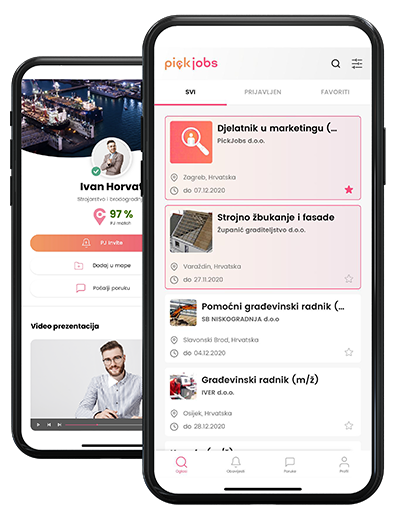There are many details to pay attention to in the job search process, but well-written job applications are the most important part of any application. It can overshadow potential deficiencies in experience and improve the impression of the candidate that is first obtained from the resume.
There are three basics you need to know before you even start writing a job application:
The job application must be different for each employer - although the resume can be sent to several addresses, i.e. be addressed to several potential employers, the job application must be different for each employer because its content depends on the type of job you are applying for.
Do not write details that are not important - it is enough to provide only the key information in a few sentences in a maximum of four paragraphs. If you stick to this advice, you will avoid unnecessarily listing unimportant information for the reader (employer).
Be sure to write about your work experience - for example, if you are applying for a job in an IT company and you have previous experience working in the same (or similar) position, mention this in your application. This is information that is important, that your potential employer is interested in. State how much work experience you have in that workplace and the exact position you held.
Tips for writing a job application
A job application should state clear motivations and interests for the employer. Through the application, you should show interest in development and learning in case you think you have less experience than the employer is looking for. Often, employers will hire a person with less experience, but with a strong motive, instead of a person who has a lot of work experience, but his attitude shows no desire for further development.
Another important step is to study the employer well and find as much information as possible about the way the job you are applying for is organized. An attention-grabbing detail is addressing the specific person reading the application, which shows that the candidate has made an effort to gather information about which person is in charge of reading applications and resumes.
It is desirable to move away from template variants that can be downloaded from the Internet and clerical enumeration of previous jobs. Employers want to read a kind of story about the candidate from the application, so it is necessary to avoid the phrases "communicative, creative, proactive and the like." Demonstrate all these skills in the way you write the application, if you write it and if that is the default form. It is desirable to show the skills in a video message or in some other form. Try looking for a job through LinkedIn!
Errors when sending applications
An unforgivable mistake is carelessness when sending an application in which the candidate addresses the wrong employer or states an interest in a position that does not apply to the company to which he is applying. Today, most employers use some kind of ATS (applicant tracking system) in which it is clearly visible which candidate is applying for which competitions within the company. Applying to all open positions with the same employer, regardless of whether the position suits you or not, can only be counterproductive.
Be sure to follow the form
Each request must include:
- Name and surname of the applicant and address (place of residence)
- Name of the company/institution/organization to which the request is addressed (to which it is sent)
- The subject of a proposal or request or the opening of a request
- Introductory part of the application
- Elaborative part of the application
- The final part of the petition
- Greeting
- Place and date of writing the application
- Handwritten signature - the applicant must sign the application by hand (except when it is sent in digital form)
- Attachments
Introductory sentence
The introductory sentence is the very beginning of the application and should actually contain only the reason for your application. Please refer to the advertisement and the position you wish to apply for.
The first paragraph
In the first paragraph, your goal is to show the employer that you are an excellent candidate for the position you are applying for. Take the text of the ad and determine which criteria from the ad you meet to the greatest extent. Then explain how you fulfill them. Feel free to use the keywords from the ad. Highlight your strongest assets here! This is the place for a summary of your work experience and your qualifications that overlap with what is required in the ad. The goal of this paragraph is for the employer to recognize you as a candidate who possesses much or all of what they are looking for.
Second paragraph
The second paragraph usually describes soft skills and social competencies. The same applies here as for the previous paragraph. Take the ad, and tell about each point that you fill in, and how you fill it in. You can freely use keywords from the ad. The goal of this paragraph is for the employer to read it and conclude that, in addition to the required work experience, you have all the soft skills he is looking for and thereby confirm that you are the ideal candidate who should be invited to a job interview.
End of the request
After you have written how you meet the criteria from the ad, you end your application with a short paragraph.
Indicate how the employer will find detailed information about you and your work experience in the attached resume and how you hope to invite you for a job interview.

 Croatia
Croatia Bosnia and Herzegovina
Bosnia and Herzegovina Serbia
Serbia Crna Gora
Crna Gora North Macedonia
North Macedonia Ukraine
Ukraine Albania
Albania Kosovo
Kosovo Austria
Austria Deutschland
Deutschland Switzerland
Switzerland









